What Is a Mezzotint? – Discover a Little-Known Printing Technique
The word “mezzotint” is one of those words that may sound intriguing, but in all honesty, not many people know what it means or what it is. In short, it is a printing process that is not very popular in the art world today, which is one of the reasons why many people, including artists, are not aware of the results that it can produce. Another reason why it is not very popular is the intense labor and amount of work it takes to produce a good-quality image, as it takes up to six hours just to prepare the plate for engraving. However, do not let this deter you, as we are going to explain this unique art technique to you so you can see for yourself if you wish to explore it further.
What Is a Mezzotint?
The word “Mezzotint” is derived from two Italian words “mezzo”, which means “half”, and “tinta” which means “tone”. Mezzontiint art is a printing process that produces half-tones, without making use of other printing techniques like stippling, hatching, cross-hatching, lines and dots, and print graduations of shade and light to form the image.
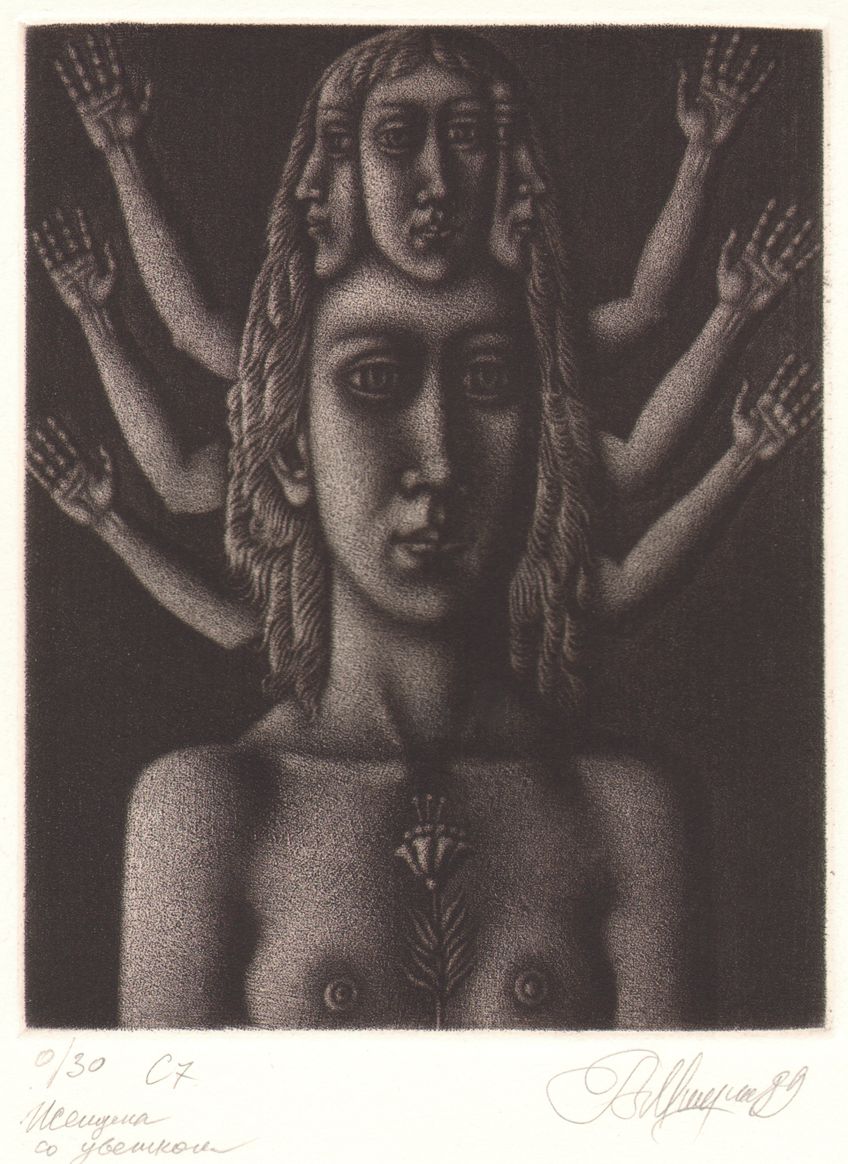
The process involves the entire face of a copper plate being grounded with small holes. This will be able to hold the ink when printing takes place and will produce areas of tone. In early times the grounding of the plate was done using a roulette, which is a small wheel that is covered with sharp points. Today, the instrument used is called a rocker, which is like a small spade that has a toothed edge that leaves burrs or rough edges on the plate. When the burrs are removed, the ink remains in the small holes which form the fine details and graduations of the image.
The mezzotint printing technique is often used in conjunction with other printing methods, such as engraving and etching.
If the mezzotint plate is used frequently it will wear over time causing the first prints or impressions to be very dark and exact, while the prints or impressions that follow will begin to fade and a lot of the finer details of the image may be lost. You can only produce about one hundred or a maximum of two hundred good-quality impressions.
History and Origin of Mezzotint
The printmaking technique of mezzotint has a rich history that dates to the 17th century and became widespread in the 18th and 19th centuries, as mezzotint engravers used the technique to create landscapes, portraits, and many other forms of prints. However, in the 20th century, photography and other forms of printing methods came into play, and the mezzotint technique appears to have lost its appeal.
In the 17th century, Ludwig von Siegen, a professional engraver, was searching for new ways to create images that would have the same tonal range as paintings did. His search led him to create a rough surface on a copper plate that allowed him to make mezzotint prints. This allowed for a wide range of tones, from lightish gray to solid black.

This proved to be a breakthrough in the printmaking industry, making it possible for him to produce tonal values that were not possible using other printmaking processes, like etching or engraving. The mezzotint process made his printed images realistic, highly detailed, and almost indistinguishable from paintings.
Some Dutch printmakers like Abraham Blooteling, Jan van Somer, and cousin to Charles II Bohemian, Prince Rupert soon took note of this amazing printing technique. It was Prince Rupert who was responsible for the development of the rocker, the tool used to improve the accessibility and efficiency of the mezzotint process. In 1669, Wallerant Vaillant, a Dutch painter, as an aid to Prince Rupert, learned the process and became the first professional mezzotint engraver.
Then in the 18th century, the mezzotint process was further developed by James McArdell, a British printmaker, along with other engravers like Paul Sandby and John Smith.
This technique was extensively used in creating portrait prints by allowing the artists greater detail and a higher degree of realism. Many famous artists used this technique at that time, such as Thomas Gainsborough and Joshua Reynolds, who created portraits of royalty and nobility.
In the 19th century, although mezzotint art was a popular means of creating prints, it had to compete with other ways of making prints such as lithography, which was a much faster way to produce prints. However, the mezzotint technique continued to be used in creating realistic and highly detailed prints.
The mezzotint process was also used for reproducing illustrations in books as well as commercial advertising. Due to its highly detailed and accurate copies, it was also used for scientific illustrations, particularly for reproducing zoological and botanical specimens.

In the 20th century, many people preferred to use photogravure and lithography techniques for reproducing prints, but many mezzotint artists kept to the mezzotint process because of its ability to produce a lot more detail, as well as vibrant colors.
In the 1960s and 70s, the mezzotint technique went through a recovery in popularity, especially in the United States. Mezzotint artists like Leonard Baskin, John Taylor Arms, and Robert Kipniss kept the technique alive, helping to return it as a printmaking method in our modern art world today.
Today, the mezzotint technique continues to be used by printmakers and artists alike, but remains a vocational technique, as contemporary printmakers and artists prefer the rich tones and detailed images that make it a technique that is revered in the art world.
Mezzotint Technique Step-by-Step Tutorial
The mezzotint process is characterized as going from dark to light, and to accomplish this, the artist will take a metal plate, normally copper, and will begin to roughen the entire surface of the plate. This is done using a rocker or it can also be done by hand, but it is a long process. This allows the ink to settle in the indented areas of the plate, and if the plate was printed at this stage, it would come out completely black.
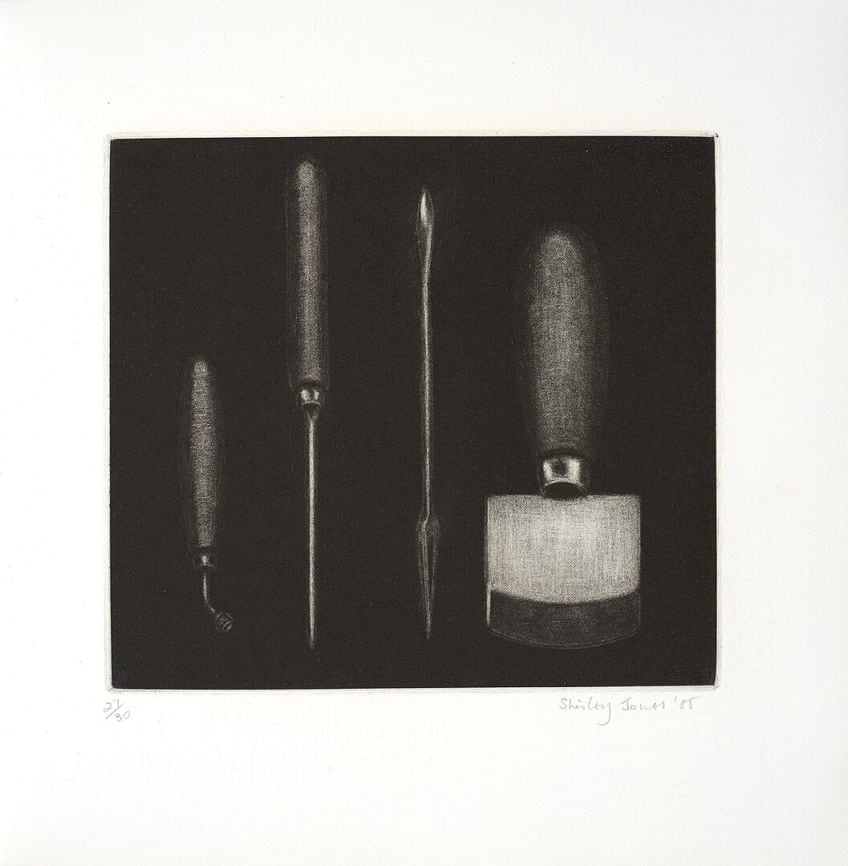
The artist then takes a scraper and a burnisher and begins to smooth the burrs, which remove the ink from those areas, giving you the lighter-toned areas of your design. All the flat sections do not contain any ink and will print white, giving you the dark-to-light characteristic of the technique.Lastly, the artist begins to ink the surface of the plate and can transfer the design to a piece of paper by passing the plate through an intaglio printing press.
This process needs to be done very carefully as the burrs of the mezzotint are very fragile, and if broken off, will not give you the desired image or design that you want.
Tools and Equipment Needed for the Mezzotint Process
The mezzotint process cannot be done from your home and requires specialized tools and equipment if you want to obtain the desired finish. This is what you will need to perform this technique.
- Metal plate: The plate is normally constructed from copper.
- Rocker: This is a tool that has a curved end and can create a certain texture on the plate.
- Scraper: This is a thin sharp tool that removes the burrs from the plate caused by the rocker.
- Burnisher: This is a smooth tool that has a rounded edge and is used to polish or burnish the plate.
- Ink: The ink that is required for the mezzotint process is usually a solid dark-colored or black ink, and is also oil-based.
- Roller: A roller is a tool that is used to roll the ink evenly onto the plate.
- Paper: You need a high-quality paper that can give you a detailed and fine final image.
- Accessories: Some mezzotint artists also make use of needles, small knives, and polishers that they use for drawing on the surface of the plate.
Preparing the Plate
Copper is usually the type of metal used for the mezzotint plate, as it is very malleable and easy to work with, and it also allows for very fine and detailed mezzotint prints. First, you need to roughen the plate surface, giving it an extremely coarse sandpaper-type texture. The tool used for this purpose is a rocker, which has a curved end and can form small burrs on the plate surface.
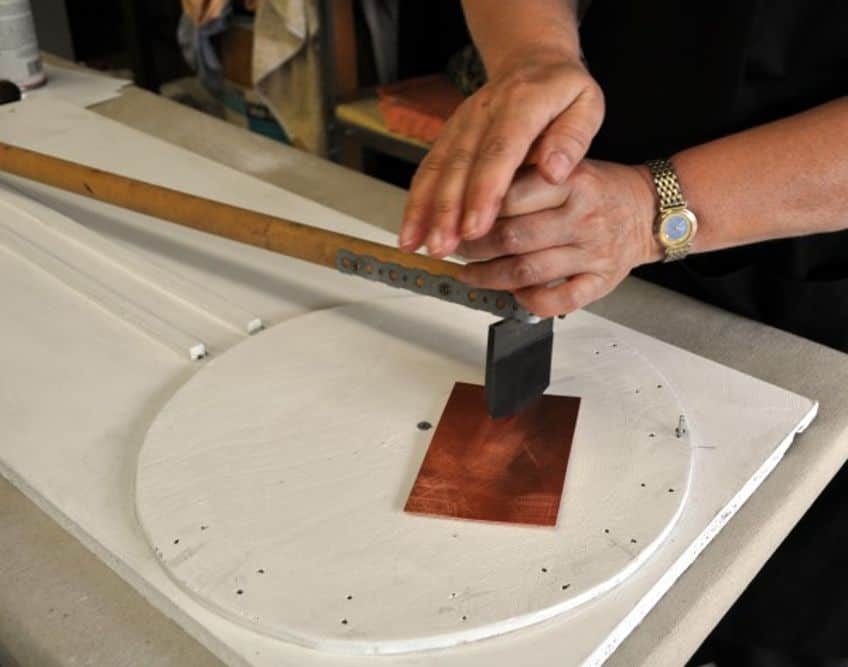
These burrs can hold the ink and later transfers the image onto the surface of the paper. These burrs can easily be seen and can also be felt by running your finger over the plate surface. To obtain a uniform texture of the burrs over the entire surface of the plate, the rocker needs to be held at a slight angle and moved backward and forwards hundreds of times, ensuring the even spacing of the burrs. Rockers can be made from different types of materials, some are steel, others are brass, and some of them come with a wooden handle for easy use.
Scraping and Burnishing
These two techniques are critical for the mezzotint printing process when drawing or creating an image on the plate. By using these two techniques of scraping and burnishing correctly, artists can create various tonal values that can range from solid black to bright white, or delicate shades of gray. If you want to create dark areas in your image, then leave the rough surface untouched, as more polishing will render a lighter print, and this technique is used to create soft gradations. Burnishing is the smoothing out of the rough surface that was formed by the rocker tool, which will create lighter areas and highlights in your final print. The scraper tool creates a more pronounced and deeper texture, and by varying the degrees and pressure, you can create different effects including highlights, shadows, and sharper outlines.
Applying less or more pressure, or using different sizes and shapes of burnishing tools, you can create light areas, soft gradations, and highlights.
Inking the Plate
Before you start to ink the plate, you need to be sure that all the copper debris has been removed from the plate, which can be done using a clean, soft cloth or a soft brush. Some artists prefer to have a preview of the image before inking the plate, and this is done by rubbing some charcoal dust over the entire surface of the plate and printing it onto a piece of paper. The charcoal dust can easily be removed by washing the plate with some soap and water.
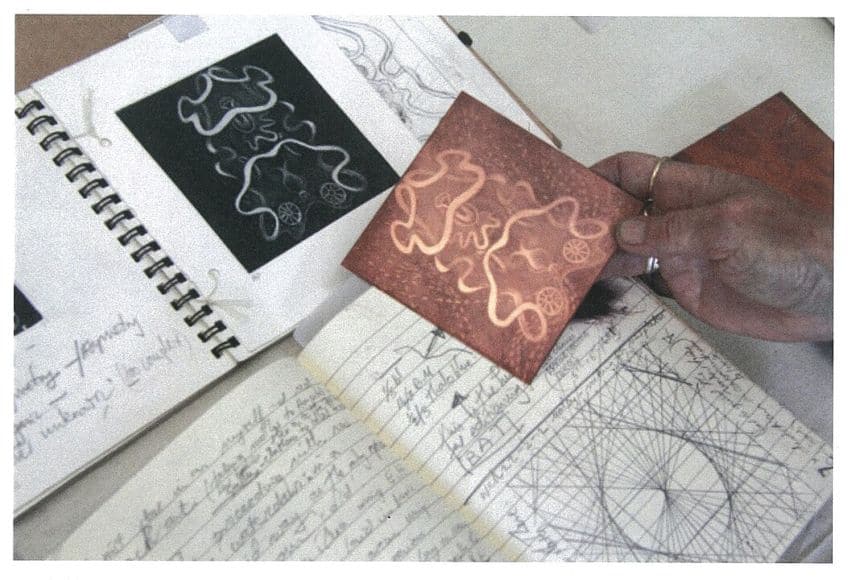
With a clean plate apply the thick, viscous ink by using a roller, and make sure you cover the entire surface of the plate, allowing the ink to fill all the valleys and grooves that were created by the scraping and burnishing tools. Now you need to remove all the leftover ink from the plate by wiping it off in a circular motion. Remove all the ink from the smooth surface and only allow ink to remain in the recessed areas of the plate.
Printing the Plate
The last step in the mezzotint process is to make a print of the image, which will involve transferring the ink to the paper. The piece of paper is placed on top of the inked plate and then inserted into the printing press, and the press is allowed to run, applying pressure to the plate, and the paper, transferring the image.
Once the printing is complete, the paper and plate are removed from the press and examined and inspected.
If the artist is not entirely satisfied with the result, they can adjust the pressure or the ink and rerun the print. The plate can then be cleaned, removing all ink and debris. If you are an amateur artist and not in possession of a proper printing press, the process of printing can be completed by hand, but you need to be able to apply the pressure needed so that the image is transferred from the plate onto the paper.
Some Masterful Artists Behind the Mezzotint Printing Technique
Very few prominent and famous artists used the mezzotint printing technique as a means of expression in their artwork, instead, it was used mainly to translate oil paintings into a printed format. The very distinct tonal effect had a remarkable way of conveying texture, and for this reason, it was perfect for translating oil paintings into print form. The rich brown and velvety black shades were a perfect match for the chiaroscuro or strong contrast between dark and light in the oil paintings, which was a contrast that affected the entire composition of the painting. Let us now consider some of the prominent artists, from the past, as well as modern-day artists, that mastered the mezzotint printing process, shaping and keeping the technique alive. Here are some of the artists.
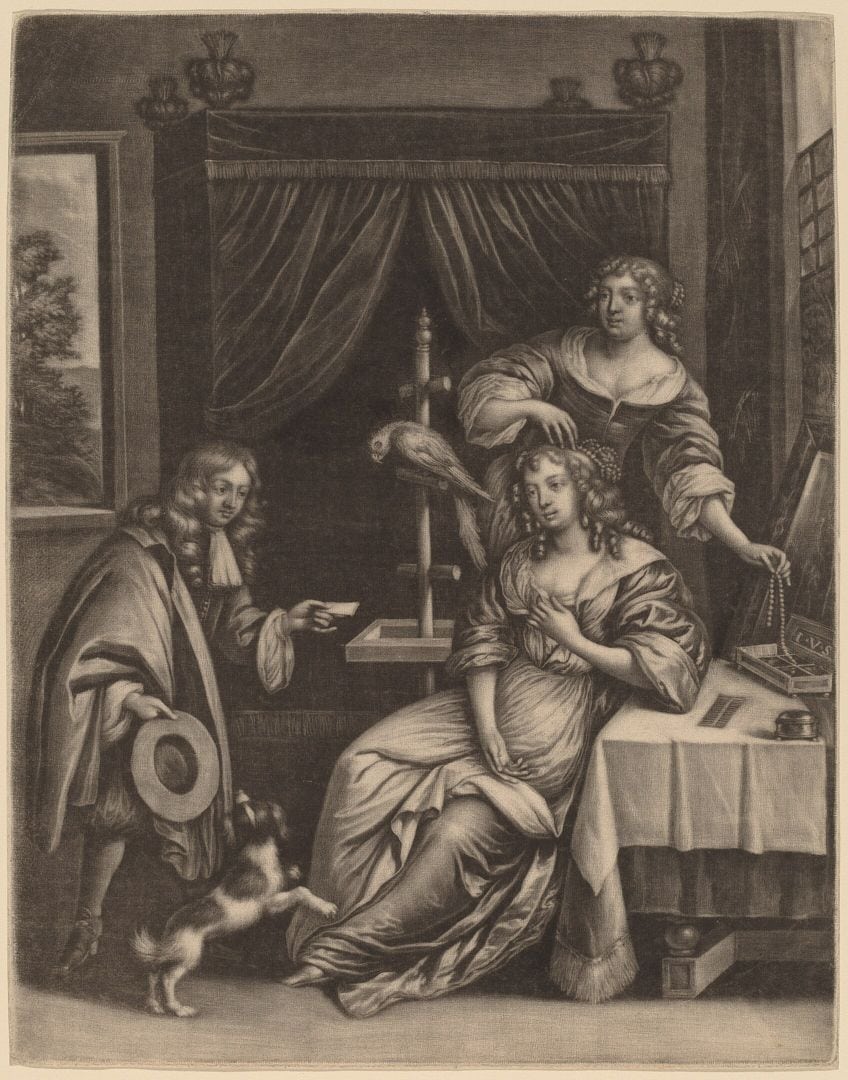
Shields on the River Tyne (1823) by Joseph Mallord William Turner
| Artist | Joseph Mallord William Turner (1775 – 1851) |
| Title | Shields on the River Tyne |
| Date Completed | 1823 |
| Medium | Mezzotint |
| Gallery | The Frick Collection, New York City, New York, United States |
Turner was an English artist, who was well-known for his interest in vibrant colors, which earned him the name of “the painter of light”. He predominantly created artworks of landscapes and seascapes and used watercolors, oils, and engravings as his mediums. He completed about 724 mezzotint art pieces.
One of his works was Shields on the River Tyne (1823), which displays laborers heaping coal from smaller boats onto a larger cargo ship.
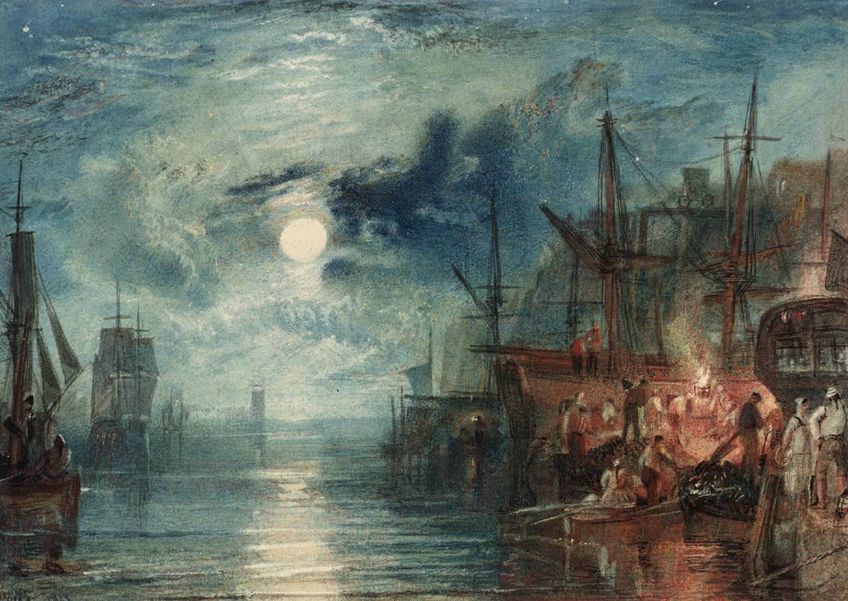
The Coast (1830) by John Constable
| Artist | John Constable (1776 – 1837) |
| Title | The Coast |
| Date Completed | 1830 |
| Medium | Mezzotint on paper |
| Gallery | Tate Art Gallery, London, United Kingdom |
John Constable was an English painter, whose main focus was on landscapes, which he did of the Suffolk countryside where he lived. He produced about 800 mezzotint art pieces. One of his works known as The Coast (1830), is a dramatic study of ocean and sky, with black clouds and rain.
Another example of his work is the Mill near Colchester (1833).

Eye (1946) by Maurits Cornelis Escher
| Artist | Maurits Cornelis Escher (1898 – 1972) |
| Title | Eye |
| Date Completed | 1946 |
| Medium | Mezzotint and drypoint |
| Gallery | National Gallery of Art, Washington, United States |
Maurits Cornelis Escher was a Dutch artist whose focus was on lithographs, woodcuts, and mezzotints. He was responsible for producing 315 mezzotint art pieces. His work known as Eye (1946), is a drawing of his own eye, done through a convex shaving mirror.
He did many other works, including Filled Plane (1951), which is a type of animalism and mythological scene.
More Mezzotint Artists
These are just a handful of mezzotint artists, and many more artists used the mezzotint process over the years. Mezzontinting is an art form, and its popularity has grown and declined over the years. Below are some well-known names, and a few more recent additions.
- Cornelis Dusart (1660 – 1704): He was a French artist who produced 184 mezzotint art pieces.
- Jean-Etienne Liotard (1702 – 1789): He was a Swiss artist and produced 61 mezzotint art pieces.
- Thomas Gainsborough (1722 – 1788): He was a well-known artist from the United Kingdom, who produced 772 mezzotint art pieces.
- John Singleton Copley (1738 – 1815): He was an American artist who produced 428 mezzotint art pieces.
- Shirley Jones (Born 1934): She is a Welsh artist, writer, and printmaker.
- Carol Wax ( Born: 1953): She is an American artist, author, and teacher of the mezzotint technique.
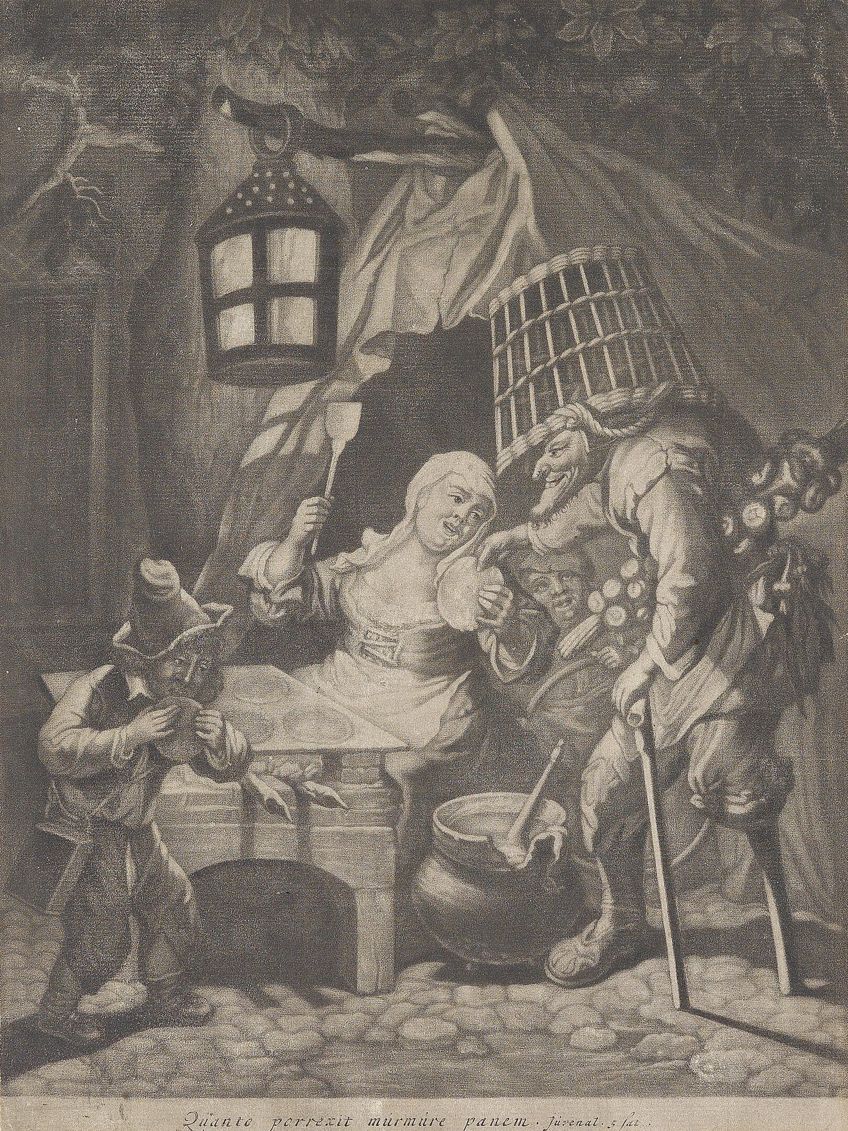
The mezzotint printing process is well-known for its excellent tonal quality and its use of a roughened surface that holds lots of ink, which provides a deep solid color when printed. When the plate is slightly smoothed, using a burnisher, it will give fine tonal gradations when printed. Most of the names associated with the process are from earlier years, however, there are still many artists who have fallen in love with the process since.
Frequently Asked Questions
What Is a Mezzotint?
Mezzotint is a printing process whereby a metal plate is engraved by roughening the plate surface and then polishing it. Once the ink has been added, this process gives the print light and shade. This process was extensively used in the 17th, 18th, and 19th centuries for the reproduction of paintings.
How Long Does It Take to Create a Mezzotint Print?
It is a very long and drawn-out process and can take two days or more to complete. The preparation of the plate alone can take up to six hours to do, and then comes the roughening using a rocker which needs to be done hundreds of times to ensure the even spacing of the burrs. Then comes the smoothing using a burnisher, then the inking, and finally the printing.
How to Identify Mezzotint Prints?
When identifying a mezzotint print, you need to observe the characteristic fine lines and crosshatched lines that are evident in the various shades of gray. These are formed in the scraping process and can be seen in the outlines on the edge of the prints. These plate markings and ink levels are all characteristic of a mezzotint print.
In 2005, Charlene completed her Wellness Diplomas in Therapeutic Aromatherapy and Reflexology from the International School of Reflexology and Meridian Therapy. She worked for a company offering corporate wellness programs for a couple of years, before opening up her own therapy practice. It was in 2015 that a friend, who was a digital marketer, asked her to join her company as a content creator, and this is where she found her excitement for writing.
Since joining the content writing world, she has gained a lot of experience over the years writing on a diverse selection of topics, from beauty, health, wellness, travel, and more. Due to various circumstances, she had to close her therapy practice and is now a full-time freelance writer. Being a creative person, she could not pass up the opportunity to contribute to the Art in Context team, where is was in her element, writing about a variety of art and craft topics. Contributing articles for over three years now, her knowledge in this area has grown, and she has gotten to explore her creativity and improve her research and writing skills.
Charlene Lewis has been working for artincontext.org since the relaunch in 2020. She is an experienced writer and mainly focuses on the topics of color theory, painting and drawing.
Learn more about Charlene Lewis and the Art in Context Team.
Cite this Article
Charlene, Lewis, “What Is a Mezzotint? – Discover a Little-Known Printing Technique.” Art in Context. September 8, 2023. URL: https://artincontext.org/what-is-a-mezzotint/
Lewis, C. (2023, 8 September). What Is a Mezzotint? – Discover a Little-Known Printing Technique. Art in Context. https://artincontext.org/what-is-a-mezzotint/
Lewis, Charlene. “What Is a Mezzotint? – Discover a Little-Known Printing Technique.” Art in Context, September 8, 2023. https://artincontext.org/what-is-a-mezzotint/.









